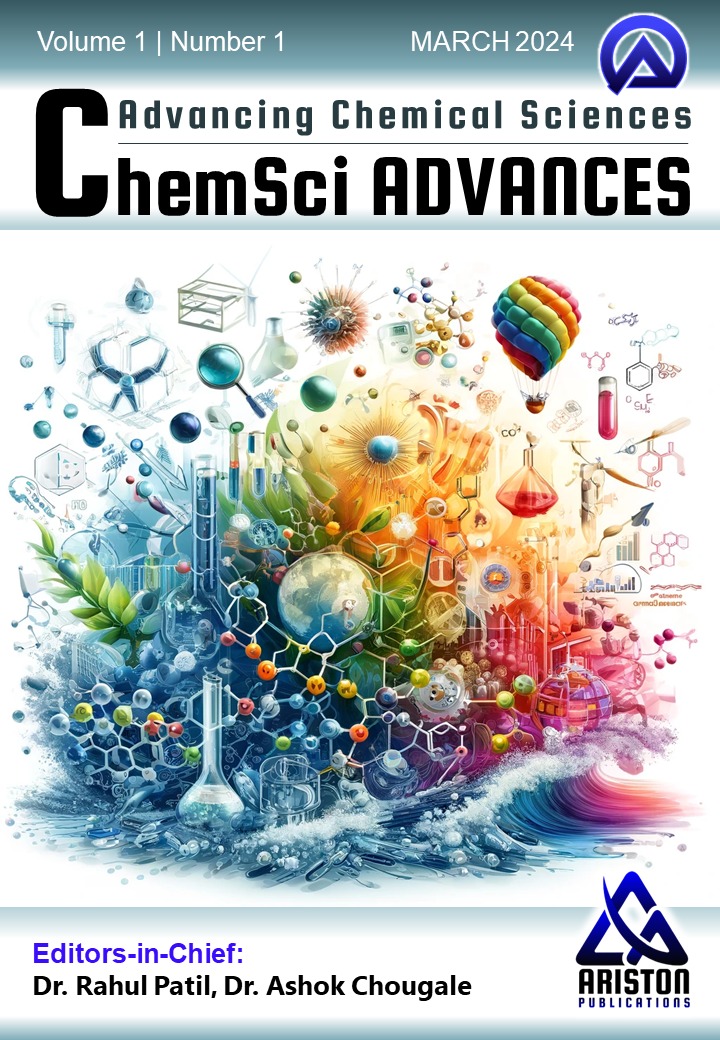Ankita Patil, Rupali Chavan, Aishwarya Jadhav, Aviraj Jatratkar, Rahul Patil, Nilesh Pawar, Ashok Chougale
1 Department of Chemistry, The New College Kolhapur, Shivaji University Kolhapur, 416012, India.
2 Department of Physics, Shri. Yashwantrao Patil Science College Solankur, Shivaji University Kolhapur, 416211, India.
3 Department of Botany, The New College Kolhapur, Shivaji University, Kolhapur, India.
*Author to whom correspondence should be addressed:
ashokdchougale@gmail.com (Ashok Chougale)
ABSTRACT
The increasing industrialization has exacerbated the scarcity of clean water, making wastewater treatment and dye degradation critical environmental challenges. Magnetic nanoparticles (MNPs) have emerged as promising catalysts for efficient wastewater remediation due to their high surface area, magnetic recoverability, and catalytic activity. This study investigates the influence of synthesis pH (6–9) on the structural, morphological, and catalytic properties of Fe₃O₄ MNPs synthesized via the co-precipitation method. Comprehensive characterization using XRD, FTIR, SEM, and EDX confirmed the formation of cubic crystalline Fe₃O₄ with phase purity, where pH variations significantly influenced particle size, morphology, and surface charge. SEM analysis revealed that pH 7 yielded well-dispersed nanoparticles with optimal porosity, while extreme pH conditions (6, 8, 9) led to irregular aggregation. The catalytic efficiency of the synthesized MNPs was evaluated in the photo-Fenton degradation of crystal violet (CV) dye under visible light. The MNPs synthesized at pH 7 exhibited superior performance, achieving 94% CV degradation within 60 min, compared to 88–89% degradation at other pH values (requiring 75–150 min). Further parametric studies established optimal conditions: 0.1 mM CV, 100 mg/L catalyst dosage, 0.1 M H₂O₂, and neutral pH. The catalyst demonstrated excellent reusability, retaining 82% efficiency after five consecutive cycles. These findings highlight the critical role of synthesis pH in tailoring MNP properties for enhanced dye degradation, offering a sustainable and magnetically separable solution for industrial wastewater treatment.

Significance of the Study:
This study demonstrates pH-controlled synthesis of Fe₃O₄ nanoparticles as efficient, magnetically recoverable catalysts for dye wastewater treatment. By optimizing synthesis pH to 7, the nanoparticles achieved 94% crystal violet degradation via photo-Fenton process within 60 minutes – outperforming other pH variants. The work provides crucial insights into how synthesis conditions govern nanoparticle morphology, stability, and catalytic activity. The reusable catalyst system offers a sustainable solution for industrial wastewater remediation, combining high efficiency with easy magnetic separation, addressing critical environmental challenges posed by toxic dye pollutants.
Summary of the Study:
Fe₃O₄ nanoparticles were synthesized via co-precipitation at pH 6-9, with pH-7 variants showing superior crystallinity and catalytic performance. Characterization confirmed pure-phase cubic spinel structure with optimal surface properties. In photo-Fenton degradation, pH-7 nanoparticles achieved 94% crystal violet removal (0.1 mM) using 0.1 M H₂O₂, maintaining 82% efficiency after 5 cycles. The study establishes synthesis pH as a critical parameter for tuning nanoparticle activity, presenting an effective, recyclable solution for dye pollution with complete degradation evidenced by UV-Vis spectral changes at 590 nm.
